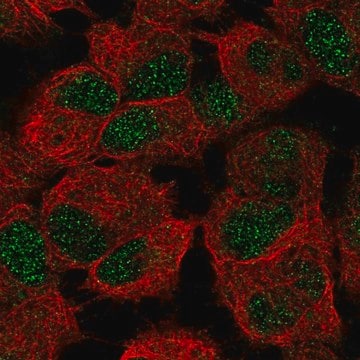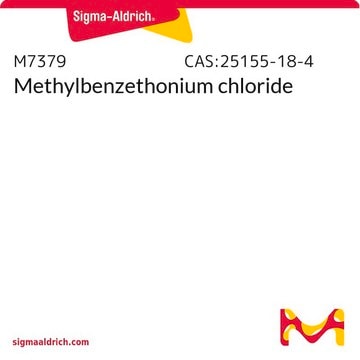C8104
Monoclonal Anti-Ceramide antibody produced in mouse
clone MID 15B4, purified immunoglobulin, buffered aqueous solution
Synonym(s):
Ceramide Antibody, Ceramide Antibody - Monoclonal Anti-Ceramide antibody produced in mouse
About This Item
Recommended Products
biological source
mouse
Quality Level
conjugate
unconjugated
antibody form
purified immunoglobulin
antibody product type
primary antibodies
clone
MID 15B4, monoclonal
form
buffered aqueous solution
technique(s)
immunohistochemistry (frozen sections): suitable
indirect ELISA: 1:10
isotype
IgM
shipped in
wet ice
storage temp.
2-8°C
target post-translational modification
unmodified
Related Categories
General description
Specificity
Immunogen
Application
- immunohistochemistry
- immunolabeling in electron microscopy
- enzyme-linked immunosorbent assay (ELISA)
- immunoblotting
- immunoprecipitation
- as a probe to determine the presence and roles of ceramide in sphingomyelin pathway signaling and the regulation of protein phosphorylation.
Biochem/physiol Actions
Physical form
Preparation Note
Analysis Note
Disclaimer
Not finding the right product?
Try our Product Selector Tool.
Storage Class Code
10 - Combustible liquids
Flash Point(F)
Not applicable
Flash Point(C)
Not applicable
Certificates of Analysis (COA)
Search for Certificates of Analysis (COA) by entering the products Lot/Batch Number. Lot and Batch Numbers can be found on a product’s label following the words ‘Lot’ or ‘Batch’.
Already Own This Product?
Find documentation for the products that you have recently purchased in the Document Library.
Customers Also Viewed
Our team of scientists has experience in all areas of research including Life Science, Material Science, Chemical Synthesis, Chromatography, Analytical and many others.
Contact Technical Service








